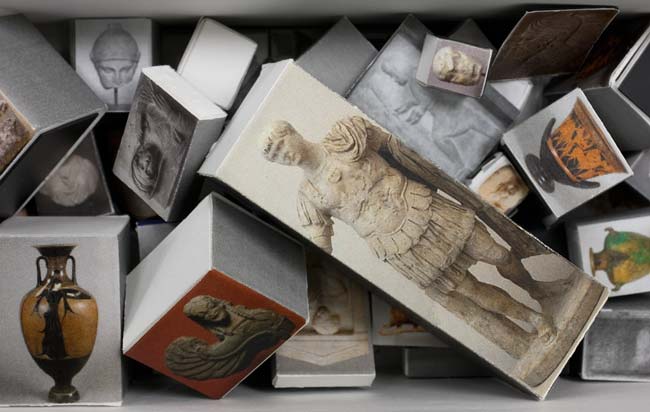As we’ve mentioned in Index before, the ongoing renovations of the Harvard Art Museums have provided curators with the rare opportunity to redesign the galleries from the bottom up. With the opening of the museums around the corner in fall 2014, we can begin to appreciate the fruits of curators’ endeavors to create a unique visitor and educational experience.
The curators of ancient art and coins are thrilled to have great new spaces to display works from the ancient Mediterranean and Near East, whose dates span over four millennia, from Old Kingdom Egypt to the Byzantine Empire. However, they face an array of challenges in interweaving them to forge coherent narratives. As Susanne Ebbinghaus, the George M. A. Hanfmann Curator of Ancient Art and head of the Division of Asian and Mediterranean Art, remarks, “It’s really a matter of determining what stories might be good for our audiences . . . [and] how different parts of our collections speak to one another.”
The new galleries, located on the third floor around the Calderwood Courtyard, will provide no shortage of opportunities for presenting works of art. It will now be possible to exhibit selections from our extensive collection of Coptic textiles, which could not be displayed in the former permanent galleries because it wasn’t possible to block the works from harmful sunlight. Also, distinct galleries will be connected through objects that spill out into the courtyard arcades; for example, Roman versions of Greek sculptures will be installed between the Roman and the Greek galleries. Finally, the Art Study Center will contain numerous objects that were handpicked because, as Ebbinghaus points out, they will be more effective there, and “you can look at them from all sides and possibly even hold them in your hands.”
Because galleries are not planned in a vacuum, curators have been in constant contact and dialogue with colleagues at similar museums that are currently conducting or have just completed renovations. In a public lecture at the Arthur M. Sackler Museum on December 5, titled “New Takes on the Ancient and Byzantine Worlds,” curators from Dumbarton Oaks, the Yale University Art Gallery, and the Harvard Semitic Museum will discuss their recent and ongoing reinstallations and the core issue that they all face: how museums with ancient and Byzantine collections can create an innovative and educational experience for a 21st-century audience.
Joseph E. Glynias (’14) is our Index student correspondent and a student assistant in the Division of Asian and Mediterranean Art. He is concentrating in the Classics.



